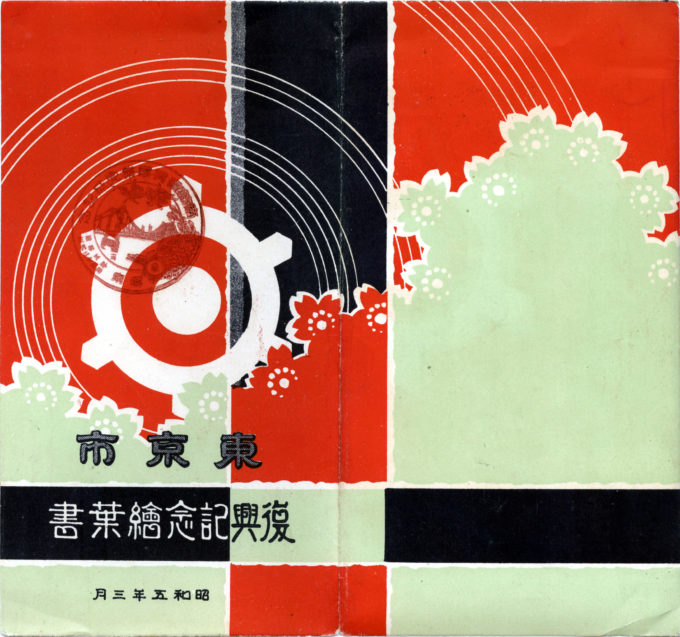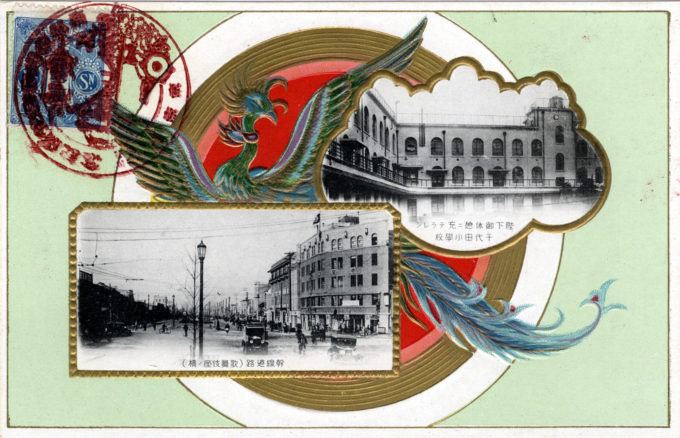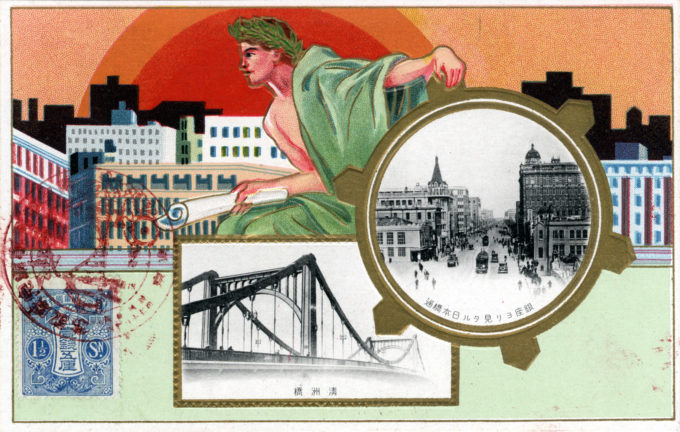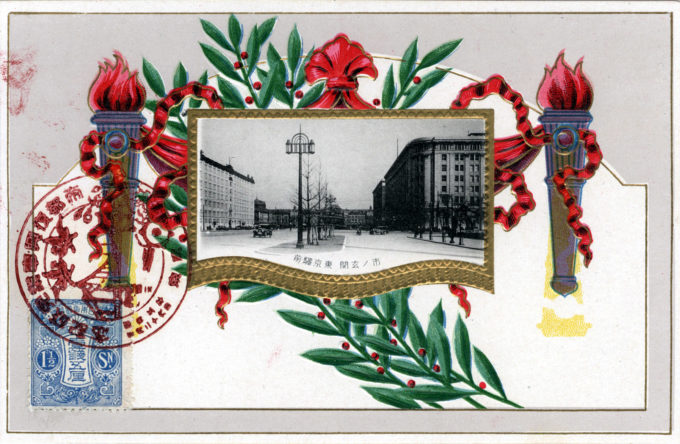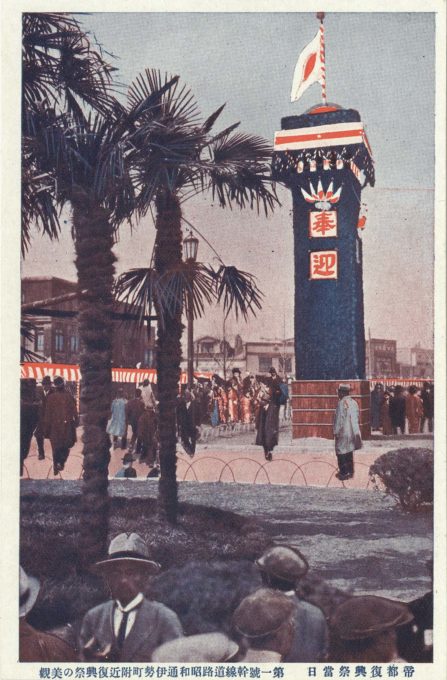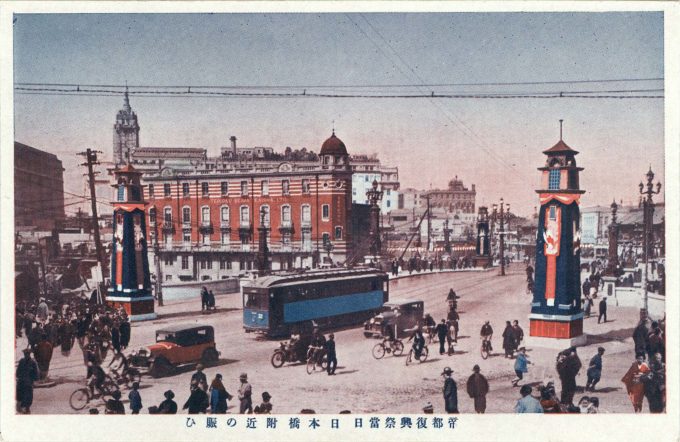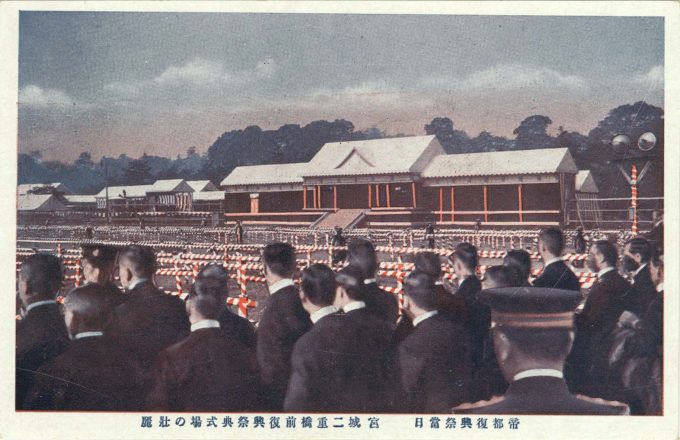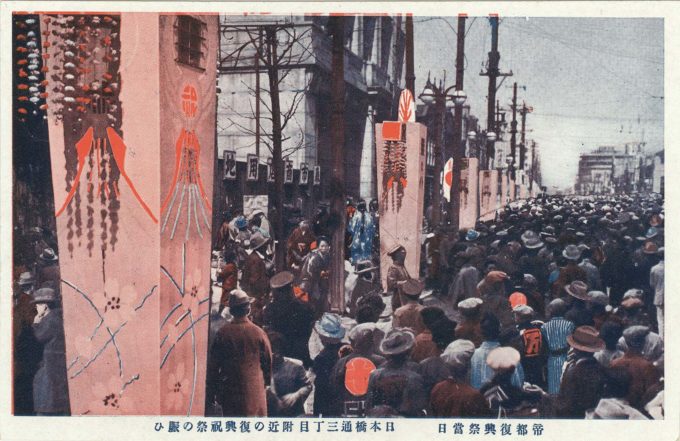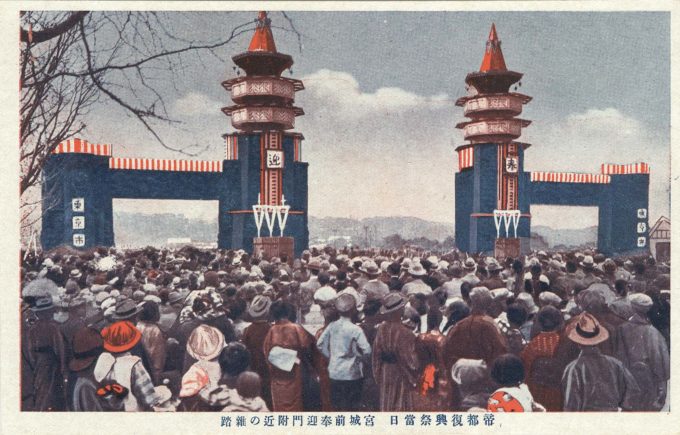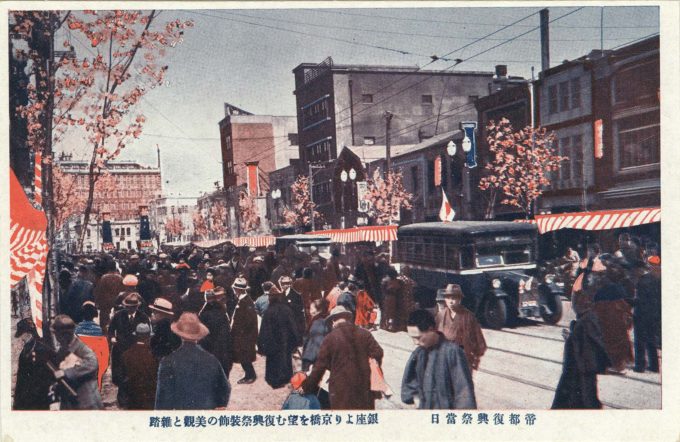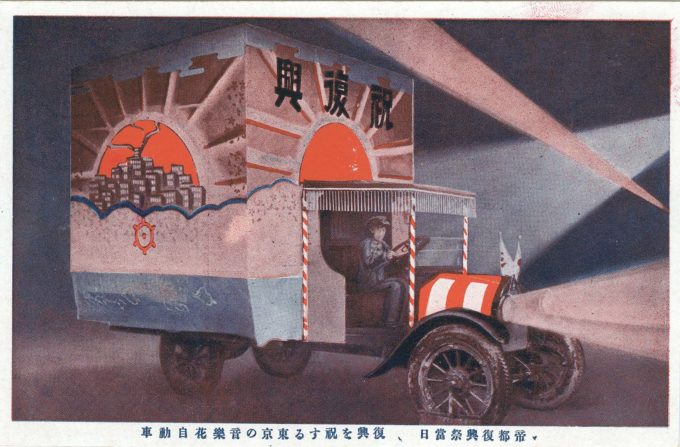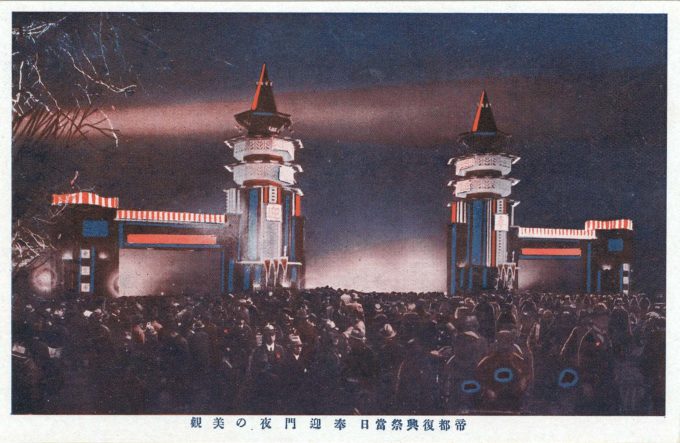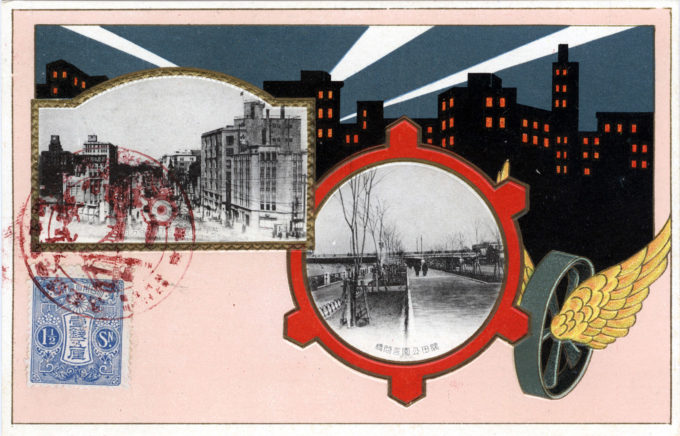
1930 Commemorative Postcard for Tokyo City’s Recovery (from the Kanto Great Earthquake). View of Hibiya from Shiba (left), and the new Kototoi Bridge at Sumida Park (right).
See also:
1923 Great Kanto Earthquake
Kiyosu Bridge, Tokyo, c. 1930
Hamacho Park, c. 1930
“On March 24, 1930, more than a million Tokyoites participated in the opening act of what became a weeklong series of events held to celebrate Tokyo’s rebirth [from the 1923 Great Kanto earthquake]. Beginning just after sunrise, throngs of people gathered near the imperial palace hoping to position themselves for a glimpse of the Showa Emperor as he embarked on a well-choreographed inspection tour of new Tokyo … The route that the emperor took and the sites selected for inspection provide many clues as to what municipal authorities believed were the meritorious reconstruction successes.
Cover for the packet of 1930 Commemorative Postcards for Reconstruction of the Imperial City: Tokyo City’s Recovery (from the Kanto Great Earthquake). Stamp reads: Commemorative for the Reconstruction of the Imperial City, 26 March Showa 5 (1930)
“The emperor’s motorcade traversed the Sumida River over four of the new six bridges – Kototoi-bashi, Kuramae-bashi, Kiyosu-bashi, and Eitai-bashi – heralded as great engineering achievements and exemplars of architectural modernity. The avenues selected for the motorcade included the widest, most magisterial new streets that Tokyo could offer any resident or visitor, including Showa-dori, Yasukuni-dorti, Asakusa-dori, Kiyosumi-dori, Eitai-dori, and Hibiya-dori.
“… Three locations visited by the emperor, however, stood out in significance. To coincide with the moment the earthquake struck Tokyo, he made a personal inspection of the unfinished Taiso Earthquake Memorial Hall in Honjo Ward … From death and remembrance he next turned to life and the future of Tokyo by visiting the newly constructed Chiyoda Primary School in Nihonbashi Ward. During his daylong tour, the emperor spent more time at the state-of-the-art school than at any other location. He met with teachers and students and spent nearly an hour inspecting the three-story, reinforced concrete symbol of modernity. He took great interest in the exterior of the building, its classrooms, its public facilities, and a number of visual and material displays placed in its spacious auditorium.
1930 Commemorative Postcard for Tokyo City’s Recovery (from the Kanto Great Earthquake). The top inset shows Chiyoda Elementary School (which the emperor visited); the bottom inset displays Showa-dori, the arterial boulevard between Ginza and the Sumida River that was built as a firebreak.
“Perhaps the memorable sight of the day, however, was the view afforded the emperor from the bluff at Ueno Park directly beneath the statue of Saigo Takamori. From this vantage point, the emperor was given an unobstructed view of the reconstructed city. The scene before him in 1930 stood in stark contrast to the ruined city he saw from this very same location on September 13, 1923, when, as crown price, he toured the city on horseback guarded by armed military personnel.”
– The Great Kanto Earthquake and the Chimera of National Reconstruction in Japan, by J. Cahrles Schenking, 2013
- 1930 Commemorative Postcard for Tokyo City’s Recovery, 1935, showing (left) Kiyosu Bridge, and the post-earthquake reconstruction of Kyobashi.
- 1930 Commemorative Postcard for Tokyo City’s Recovery, 1935, showing the plaza in front of Tokyo Central Station at Marunouchi.
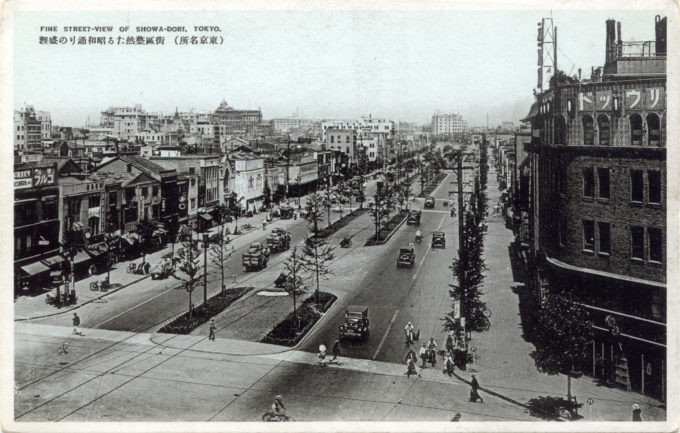
Showa-dori, Tokyo, c. 1930. The wide boulevard was built east of Ginza after the earthquake as a firebreak and named in honor of the then-current emperor.
“The official view was that the reconstruction of Tokyo from the great earthquake was complete by 1930. A ‘reconstruction festival’ took place in March of that year. The emperor, who had been regent at the time of the earthquake, was among those who addressed a reconstruction rally in the palace plaza. The mayor addressed a gathering in Hibiya Hall, a few hundred yards to the south. The citizenry was not much a part of these rallies, but the celebrations went on for several days and included events to please everyone – parades and ‘flower trolleys’ and the like. These last were elaborately decorated trolleys that went all over the city.
“The emperor took an inspection tour, and expressed taciturn satisfaction with all that he saw by way of reconstruction and hopes for a future of unity and progress. He used the word ‘capital’ to particular effect, as if to emphasize that there was to be no more talk of a capital elsewhere. The organizers of the tour shielded him from the masses with a thoroughness at which the Japanese are very good. Some fifteen thousand people with whom it was conceivable he might come into contact were vaccinated against smallpox. An estimated quarter of a million people were in some way involved in the planning and execution. The tour took him through the flat Low City, the regions most cruelly devastated by earth quake and fire. He stopped, among other places, at Sumida Park and the earthquake memorial.
“… The Japanese word that is here rendered as ‘reconstruction’ is also rendered by the dictionaries as ‘restoration’. Perfect restoration of a city is probably impossible. There may be attempts to redo a city exactly as it was before whatever restoration is necessary. There have been such attempts in Europe since 1945 … Nothing of the sort was attempted in Tokyo [after the earthquake].”
– “History of Tokyo 1867-1989: From Edo to Showa: The Emergence of the World’s Greatest City”, by Edward Seidensticker, 2019
- Tokyo Reconstruction Festival, March 1930. Official viewing stand.
- Tokyo Reconstruction Festival, March 1930. At Nihonbashi 3-chome.
- Tokyo Reconstruction Festival, March 1930. “Welcome” arch in front of the Imperial Palace plaza.
- Tokyo Reconstruction Festival, March 1930. Between Ginza Crossing and Kyobashi.
- Tokyo Reconstruction Festival, March 1930.
- Tokyo Reconstruction Festival, March 1930. “Welcome” arch (hougei-mon) at night.


